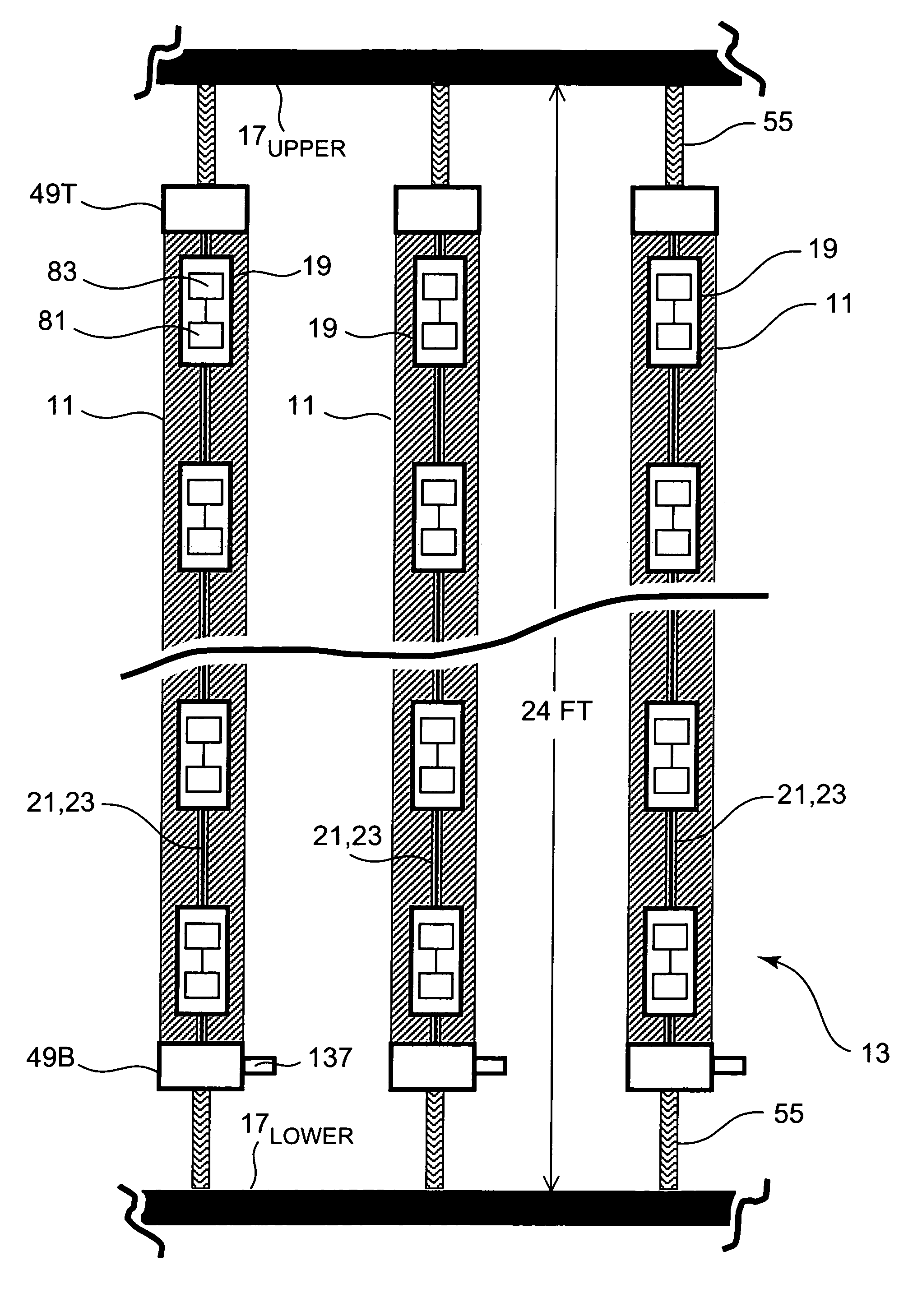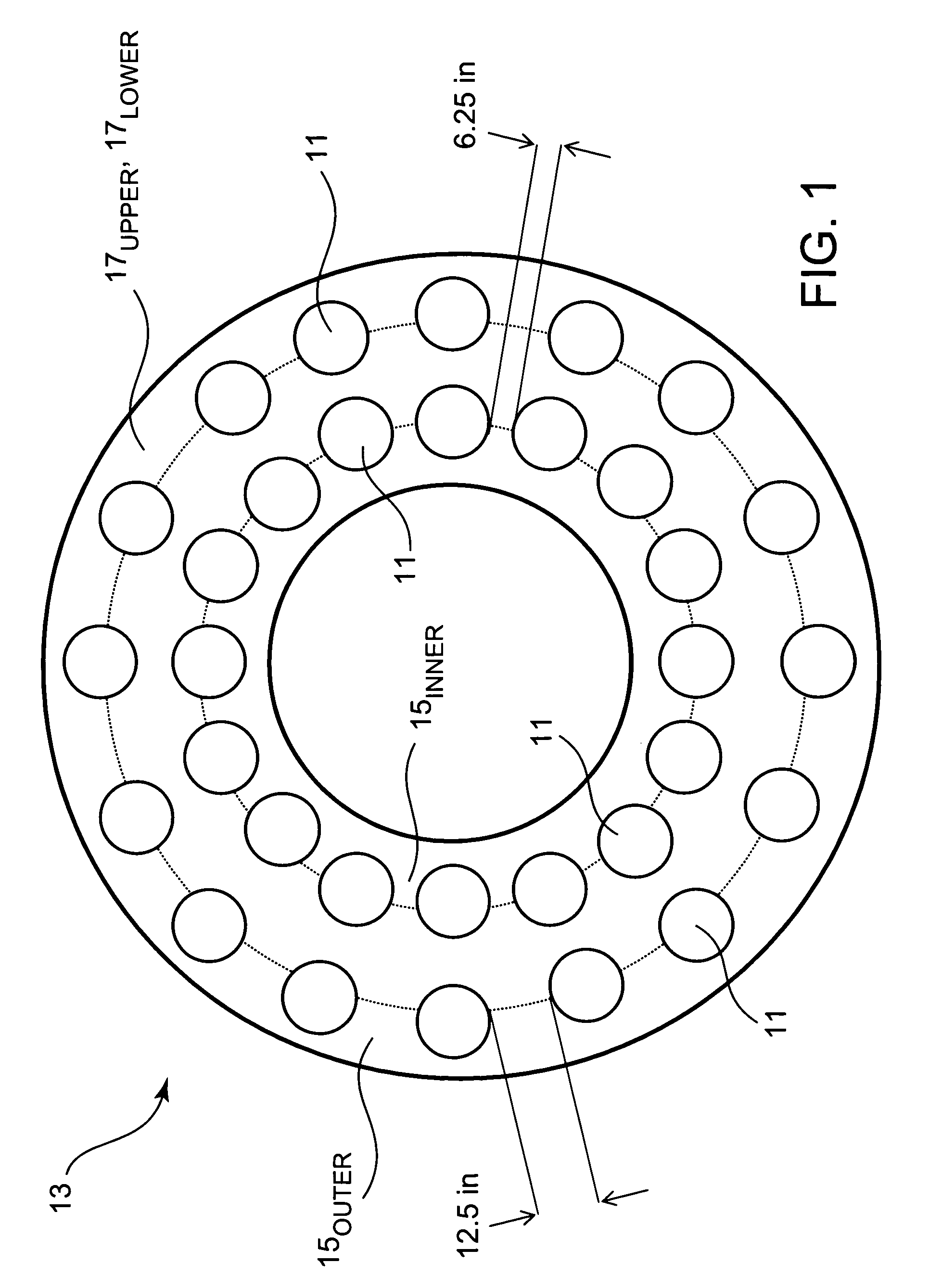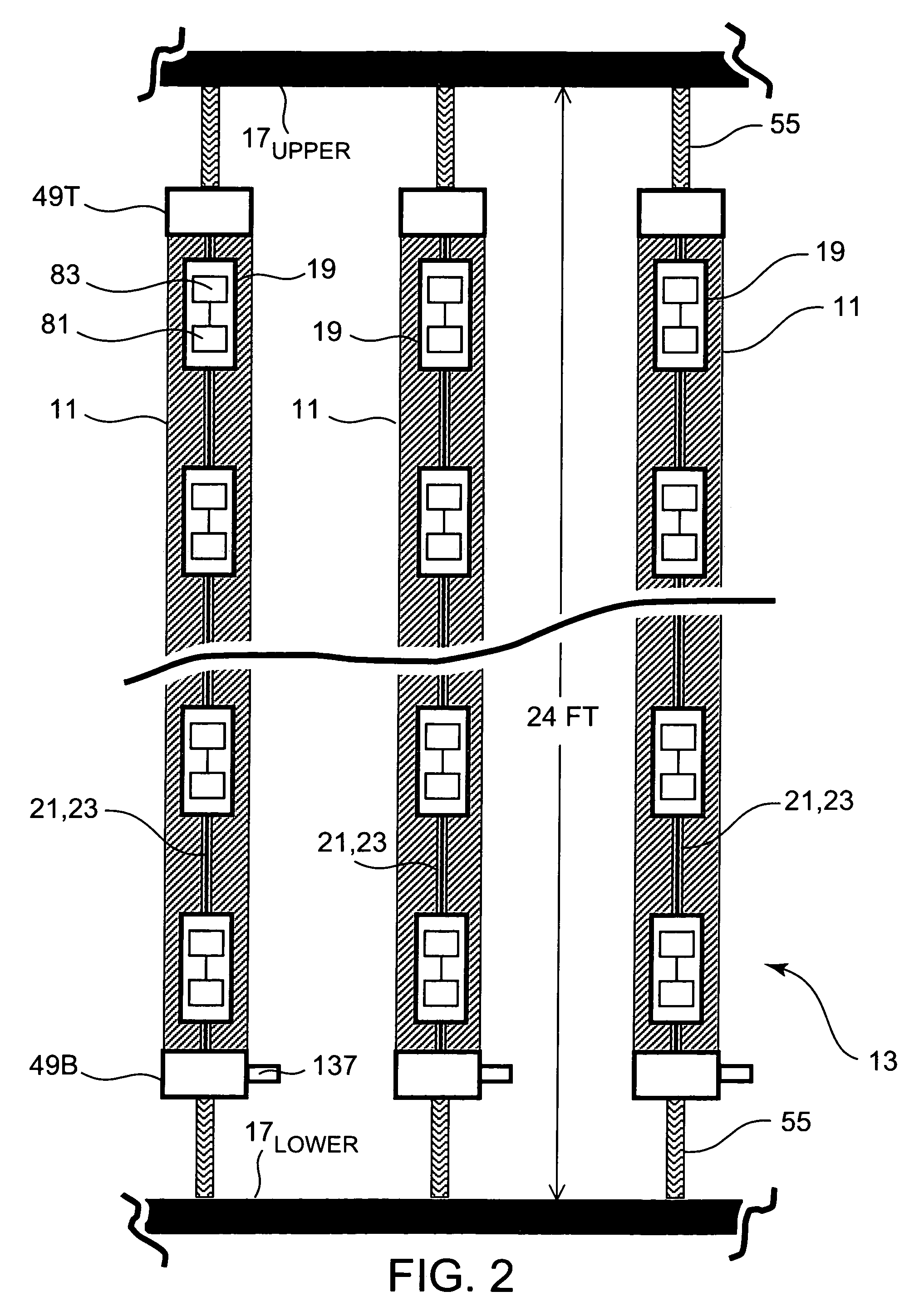Non-kinking oil-filled acoustic sensor stave
a technology of oil-filled acoustic sensor and stave, which is applied in the field of hydrophones, can solve the problems of deterioration of polyurethane encapsulant, difficulty in repair of malfunctioning hydrophone, and numerous failures of stave, and achieves convenient storage of inventive apparatus, pliable quality, and good elasticity
- Summary
- Abstract
- Description
- Claims
- Application Information
AI Technical Summary
Benefits of technology
Problems solved by technology
Method used
Image
Examples
Embodiment Construction
[0026]Ongoing tests performed by NSWCCD using one or more inventive hydrophone stave 11 prototypes arranged or placed according to certain U.S. Navy standards continue to yield positive results and demonstrate the efficacy of the present invention. Referring now to FIG. 1 and FIG. 2, inventive hydrophone staves 11 can be made part of an HGA configuration 13 similar to that which is currently utilized by NSWCCD. The HGA 13 configuration that is currently deployed from the U.S. Navy's laboratory test ship USNS HAYES for NSWCCD use is shown in FIG. 1 and FIG. 2. Although the present invention remains in the testing stages, it is contemplated that thirty-two inventive hydrophone staves may one day be used in the HGA arrangement that is diagrammatically illustrated in FIG. 1 and FIG. 2. It is to be understood that the present invention admits of practice in a variety of high gain array contexts, and that conceptual embodiments such as shown in FIG. 1 and FIG. 2 merely represent examples ...
PUM
 Login to View More
Login to View More Abstract
Description
Claims
Application Information
 Login to View More
Login to View More - R&D
- Intellectual Property
- Life Sciences
- Materials
- Tech Scout
- Unparalleled Data Quality
- Higher Quality Content
- 60% Fewer Hallucinations
Browse by: Latest US Patents, China's latest patents, Technical Efficacy Thesaurus, Application Domain, Technology Topic, Popular Technical Reports.
© 2025 PatSnap. All rights reserved.Legal|Privacy policy|Modern Slavery Act Transparency Statement|Sitemap|About US| Contact US: help@patsnap.com



